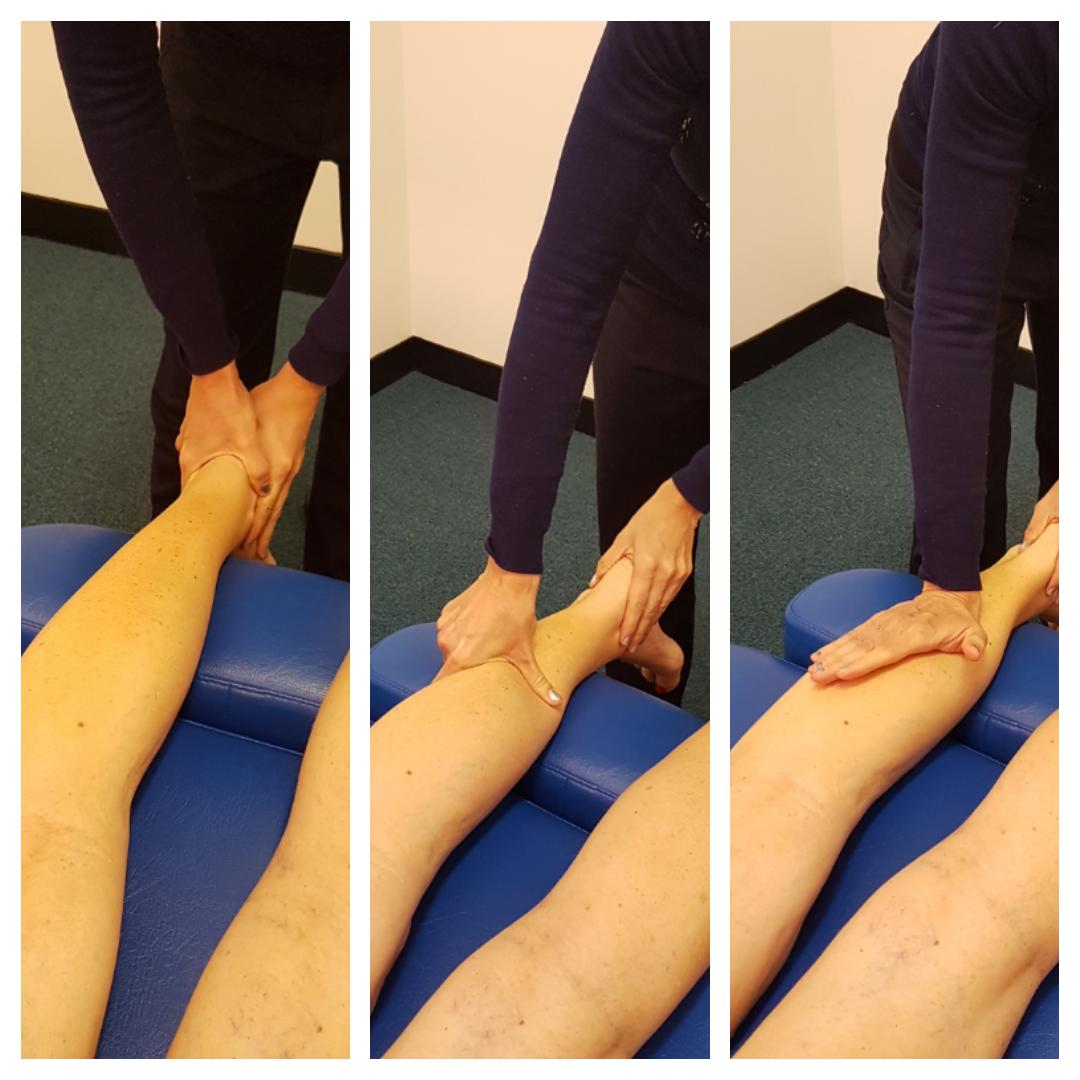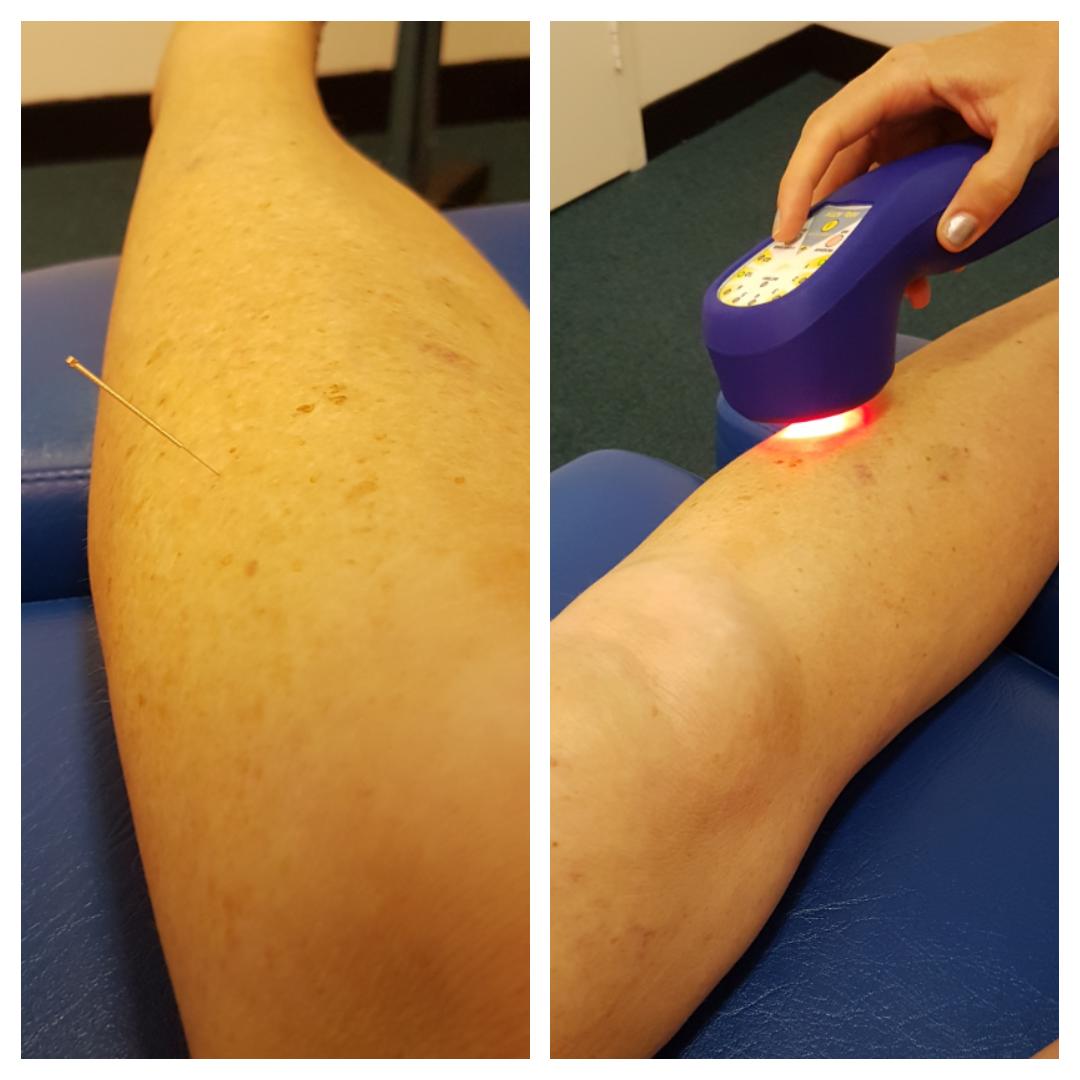
Shin splints is pain on either the front, or felt deep in the inner side of the lower leg. Shin splints is most commonly seen in runners, tennis players, dancers and many other athletes. The pain is described as a dull ache that can sometimes be painful to touch, and most frequently affects the dominant side. It is an over use injury and doesn’t often occur after a particular traumatic event.
There are two types of shin splints; one is located at the anterior/ front part of the shin bone. This involves the tibialis anterior muscle, which role is to lift and lower your foot. If pain increases with lifting toes up with heels on the ground, you are most likely to get anterior shin splints. The other form of shin splints is located at the posterior/ inside rear part of the shin. This involves the tibialis posterior. This muscle lifts and controls the medial aspect of the foot’s arch when weight bearing. When this muscles is weak the foot rolls in more, due to a decreased support in the arch. If you are experiencing pain in this location it is most likely due to the tibialis posterior (shin splints) or tibial stress fracture- medial tibial stress syndrome.
What are the causes of shin splints- it is an over strain in the muscle where it attaches to the tibia (shin bone). The strain can be a result of overtraining and poor foot and leg movement. Flat feet, inadequate stretching, poor footwear, increasing load of exercise suddenly, running on hard or angled surfaces, decreased flexibility at ankle, poor knee flexion, weak gluteal muscles, poor abdominal control, tight calf’s and hamstrings, and weak quadriceps are all major risk factor and contributors of shin splints.
There are 4 stages of shin splints
How can you prevent shin splints? A thorough warm up, stretches, strengthen muscles of the lower leg, run on soft surfaces, decrease the intensity of training, and wear correct running shoes.
Some initial treatment tips include: stop running completely, decrease training, ice to reduce inflammation, stretch your Achilles if its medial shin splints, and calf if it is anterior shin splints. If you begin to exercise again, strap or tape lower leg to bring the tendon of the muscles closer to the shin bone to prevent stress. This should be done until the intensity of the pain is reduced, which will be approximately 6-8 weeks. You can take on other activities in the meantime that will not load the tibialis anterior or posterior such as swimming, walking in the pool or bike riding.
 If you have shin pain, don't wait - visit Lakeside Chiropractic, central to the northern suburbs of Perth now for a full assessment. The chiropractors here will examine your shin and reach a concise diagnosis, and provide the most appropriate care for your shin pain. Lakeside Chiropractic provides a multimodal approach, this includes- Soft tissue therapy, joint mobilisation, rehabilitative exercises and stretches, activity and training advice will be given by our chiropractors to aid in recovery, education on technique and postural correction as a preventative measure, anti-inflammatory advice will be given if necessary. Dr Schiller has a post graduated Sports science diploma and had 20 years of experience in dealing with extremity pain.
If you have shin pain, don't wait - visit Lakeside Chiropractic, central to the northern suburbs of Perth now for a full assessment. The chiropractors here will examine your shin and reach a concise diagnosis, and provide the most appropriate care for your shin pain. Lakeside Chiropractic provides a multimodal approach, this includes- Soft tissue therapy, joint mobilisation, rehabilitative exercises and stretches, activity and training advice will be given by our chiropractors to aid in recovery, education on technique and postural correction as a preventative measure, anti-inflammatory advice will be given if necessary. Dr Schiller has a post graduated Sports science diploma and had 20 years of experience in dealing with extremity pain.
Lakeside Chiropractic is central to the northern suburbs of Perth located in the City of Joondalup. We have patients visit us from the surrounding suburbs such as Currambine - 6028, Kinross - 6028, Connolly - 6027, Iluka - 6028, Banksia Grove - 6031, and Carramar - 6031. The friendly, professional chiropractors at Lakeside Chiropractic can discuss the benefits of chiropractic for your shin pain.
You can contact us on 9300 0095, or visit our website www.lakesidechiro.com.au to make an enquiry or booking.